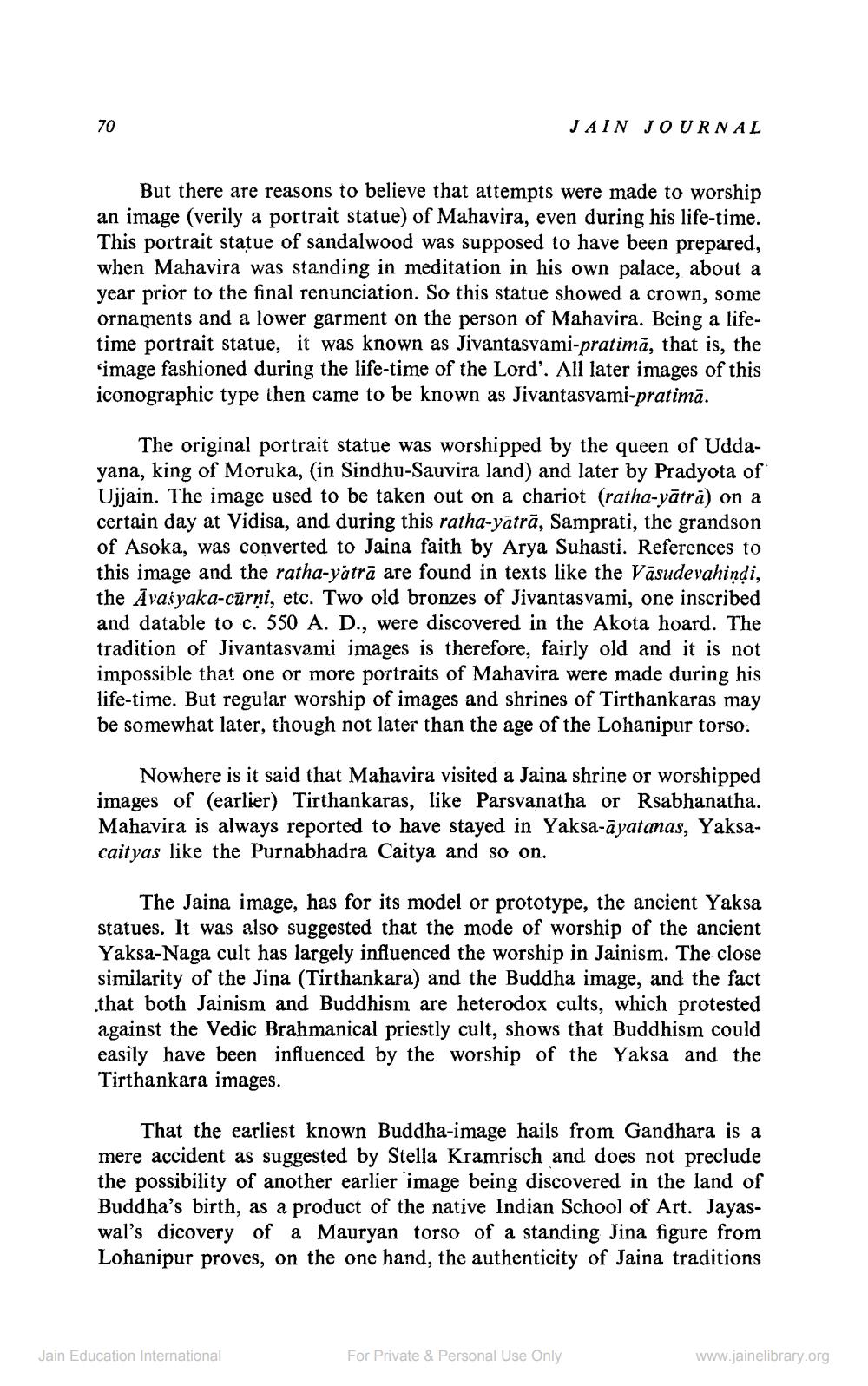________________
JAIN JOURNAL
But there are reasons to believe that attempts were made to worship an image (verily a portrait statue) of Mahavira, even during his life-time. This portrait statue of sandalwood was supposed to have been prepared, when Mahavira was standing in meditation in his own palace, about a year prior to the final renunciation. So this statue showed a crown, some ornaments and a lower garment on the person of Mahavira. Being a lifetime portrait statue, it was known as Jivantasvami-pratimā, that is, the ‘image fashioned during the life-time of the Lord'. All later images of this iconographic type then came to be known as Jivantasvami-pratimā.
The original portrait statue was worshipped by the queen of Uddayana, king of Moruka, (in Sindhu-Sauvira land) and later by Pradyota of Ujjain. The image used to be taken out on a chariot (ratha-yātrā) on a certain day at Vidisa, and during this ratha-yātrā, Samprati, the grandson of Asoka, was converted to Jaina faith by Arya Suhasti. References to this image and the ratha-yatrā are found in texts like the Vasudevahindi, the Avasyaka-cūrni, etc. Two old bronzes of Jivantasvami, one inscribed and datable to c. 550 A. D., were discovered in the Akota hoard. The tradition of Jivantasvami images is therefore, fairly old and it is not impossible that one or more portraits of Mahavira were made during his life-time. But regular worship of images and shrines of Tirthankaras may be somewhat later, though not later than the age of the Lohanipur torso:
Nowhere is it said that Mahavira visited a Jaina shrine or worshipped images of (earlier) Tirthankaras, like Parsvanatha or Rsabhanatha. Mahavira is always reported to have stayed in Yaksa-āyatanas, Yaksacaityas like the Purnabhadra Caitya and so on.
The Jaina image, has for its model or prototype, the ancient Yaksa statues. It was also suggested that the mode of worship of the ancient Yaksa-Naga cult has largely influenced the worship in Jainism. The close similarity of the Jina (Tirthankara) and the Buddha image, and the fact .that both Jainism and Buddhism are heterodox cults, which protested against the Vedic Brahmanical priestly cult, shows that Buddhism could easily have been influenced by the worship of the Yaksa and the Tirthankara images.
That the earliest known Buddha-image hails from Gandhara is a mere accident as suggested by Stella Kramrisch and does not preclude the possibility of another earlier image being discovered in the land of Buddha's birth, as a product of the native Indian School of Art. Jayaswal's dicovery of a Mauryan torso of a standing Jina figure from Lohanipur proves, on the one hand, the authenticity of Jaina traditions
Jain Education International
For Private & Personal Use Only
www.jainelibrary.org




